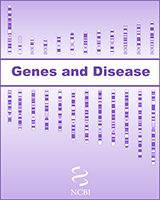NCBI Bookshelf. A service of the National Library of Medicine, National Institutes of Health.
National Center for Biotechnology Information (US). Genes and Disease [Internet]. Bethesda (MD): National Center for Biotechnology Information (US); 1998-.

Edward Alfred Cockayne (1880-1956), after whom this disease is named, was a London physician who concentrated particularly on hereditary diseases of children. Cockayne syndrome is a rare inherited disorder in which people are sensitive to sunlight, have short stature, and have the appearance of premature aging. In the classical form of Cockayne syndrome (Type I), the symptoms are progressive and typically become apparent after the age of 1 year. An early onset or congenital form of Cockayne syndrome (Type II) is apparent at birth. Interestingly, unlike other DNA repair diseases, Cockayne syndrome is not linked to cancer.
After exposure to UV radiation (found in sunlight), people with Cockayne syndrome can no longer perform a certain type of DNA repair, known as "transcription-coupled repair." This type of DNA repair occurs "on the fly" right as the DNA that codes for proteins is being replicated. Two genes defective in Cockayne syndrome, CSA and CSB, have been identified so far. The CSA gene is found on chromosome 5. Both genes code for proteins that interacts with components of the transcriptional machinery and with DNA repair proteins.
Escherichia coli, a bacterium, also undergoes transcription-coupled repair, and a yeast counterpart of the CSB gene has also recently been discovered. These similar mechanisms to the one found in humans are invaluable for studying the molecular processes involved in transcription-coupled repair because powerful molecular genetics techniques can be used. A better understanding of the mechanisms involved will help unravel the pathogenesis of disease and may identify potential drug targets.
- Genome view see gene locations
- Entrez Gene collection of gene-related information
- BLink related sequences in different organisms
- Research articles online full text
- Books online books section
- OMIM catalog of human genes and disorders
- GeneReviews a medical genetics resource
- Cockayne syndrome - Genes and DiseaseCockayne syndrome - Genes and Disease
Your browsing activity is empty.
Activity recording is turned off.
See more...
